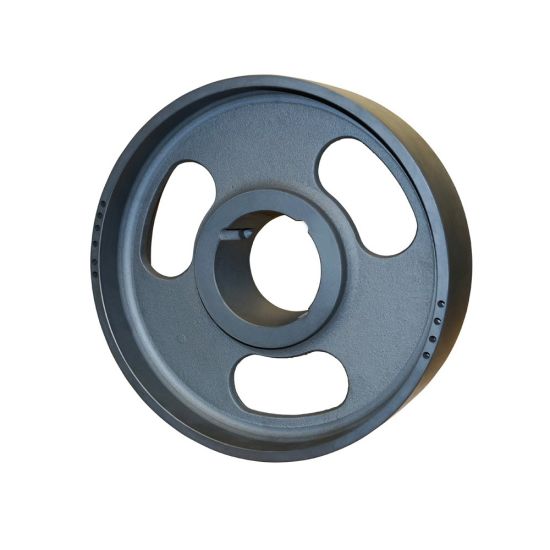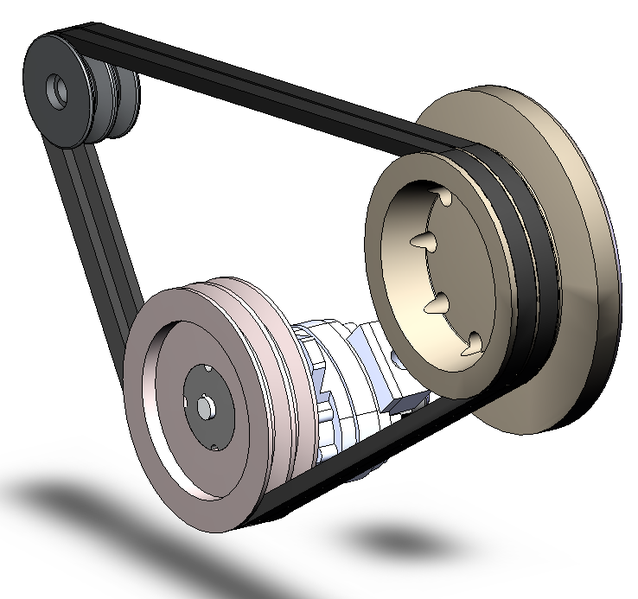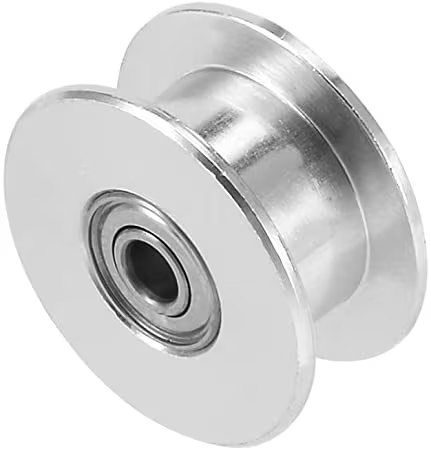Product Description
Nylon products have outstanding wear resistance. Its friction coefficient is usually 0.1-0.3. As 1 / 4 of phenolic plastic cloth and 1 / 3 of Ba alloy, it is an excellent self-lubricating material with good mechanical properties. Nylon products have high hardness, high tensile strength, bending resistance, impact strength and high elongation. Its compressive strength is equal to that of metal, and its fatigue strength is the same as that of cast iron and aluminum alloy. Stable chemical stability, which is not affected by chemicals, whether weak base, alcohol fat, hydrocarbon or oil. Light specific gravity, good toughness, strong wear resistance, oil resistance, earthquake resistance and other characteristics. It is suitable for making wear-resistant parts, transmission structural parts, household appliance parts, automobile manufacturing parts, mechanical parts, Chinese equipment and electrical insulation parts. Such as turbine, gear, bearing, impeller, blade, screw rod, high-pressure washer, sealing ring, nut, screw, shuttle, sleeve, shaft sleeve connector, etc.
Specification
|
item |
value |
|
Applicable Industries |
Building Material Shops, Manufacturing Plant, Machinery Repair Shops, Farms, Home Use, Printing Shops, Construction works , Energy & Mining |
|
Place of CHINAMFG |
China |
|
|
ZheJiang |
|
Brand Name |
kangyaun |
|
Model Number |
|
|
Type |
FLANGED |
|
Material |
plastic nylon PA6 POM |
|
Type |
sleeve, Sleeve, Plastic Bushing Spacer |
|
name |
cnc turning plastic nylon bushing nylon bushing shaft sleeve |
|
Specifications (size) |
customizable |
|
Sizes |
As Per Your Drawing |
|
Service |
Customized OEM CNC Machining |
|
Material |
nylon, POM/MC Nylon/ PA/PTFE/PE |
|
Color |
color can be customized |
|
Sample |
Available |
|
Application: |
automotive,industrial equipment |
Our Advantages
We provide OEM services, which means producing based on your drawings or samples, also we can design accoeding to its or customers requirements.
We have specialised in the manufacture of high quality CNC machined components made of plastic for virtually industry. We provide you with virtually unlimited processing possibilities and a leading manufacturer with one-of-a-kind installations and machinery. We have modern, high-performance CNC machining centres. Our high-precision CNC systems are equipped with dry and wet processing as well as internally cooled tools. OUR SERVICES
Company Information
HangZhou Kangyuan Rubber & Plastic Technology Co., Ltd. is located in HangZhouan County, HangZhou City, ZheJiang Province. We are a modern high-tech enterprise integrating the research and development, production and market expansion of high-performance engineering rubber and plastic products. Our company specializes in producing all kinds of CHINAMFG tires, polyurethane products, all kinds of engineering plastic products, such as nylon, HDPE, UHWMPE, POM, ABS, PP, PEEK, PC and other plastic products, processing rubber products, support mold customization. The company has the international leading level of polyurethane casting production line equipment and many large CNC machine processing equipment, injection molding equipment, can meet the various needs of customers. We are driven by quality and committed to providing world class products to meet customer expectations. To ensure that our products meet international standards, a detailed quality assurance plan has been developed. Quality control begins with the purchase of raw materials, every process from production to finished product, and every batch of testing before packaging and shipping. The company has internal testing equipment in line with international standards. We are ISO 9001:2015 certified to demonstrate our commitment to quality. Products have been recognized and praised by users all over the country, and exported to North America, South America, South Asia, Europe and other dozens of countries and regions.
Manufacturing shop
Production proces
Packing and Transportation
All the goods will be packed well before shipping. Normally ,they will be shipped by sea,by air or by express according to the weight,the volume, or the customer’s requirements.
Certifications
FAQ
Q1: Are you a manufacturer?
A1: Yes, we have been in providing the professional products
Q2: Is customized available ?
A2: Yes, according to your detailed drawings you provide.
Q3: How to pay?
A3: Via Paypal ,T/T payment,Trade Assurance and other payment. About the payment details please feel free to contact us. Thank you!
Q4:Can you supply sample?
A4:Yes,we can supply you free small samples,but air cost will be paid by customers.
Q5:How many days will the samples be finished?And how about the mass production?
A5: Generally the samples will be sent immediately by the air express in 3-5 days if the goods are in stock. Normally within
30days or according to your order.
/* January 22, 2571 19:08:37 */!function(){function s(e,r){var a,o={};try{e&&e.split(“,”).forEach(function(e,t){e&&(a=e.match(/(.*?):(.*)$/))&&1
| Material: | Stainless Steel |
|---|---|
| Type: | Carrying Roller |
| Usage: | Conveyor Belt System |
| Customization: |
Available
| Customized Request |
|---|
.shipping-cost-tm .tm-status-off{background: none;padding:0;color: #1470cc}
|
Shipping Cost:
Estimated freight per unit. |
about shipping cost and estimated delivery time. |
|---|
| Payment Method: |
|
|---|---|
|
Initial Payment Full Payment |
| Currency: | US$ |
|---|
| Return&refunds: | You can apply for a refund up to 30 days after receipt of the products. |
|---|

How do belt pulleys affect the performance of woodworking and milling machines?
Belt pulleys have a significant impact on the performance of woodworking and milling machines. They play a crucial role in power transmission, speed control, and overall functionality of these machines. Here’s a detailed explanation of how belt pulleys affect the performance of woodworking and milling machines:
1. Power Transmission: Belt pulleys are essential for power transmission in woodworking and milling machines. They connect the motor or engine to various components, such as the cutting tools, spindles, or feed mechanisms. The rotation of the pulleys transfers power from the motor to the driven components, enabling them to perform their cutting, shaping, or drilling functions. The efficiency and effectiveness of power transmission through the belt pulleys directly impact the overall performance of the machine.
2. Speed Control: Belt pulleys provide speed control in woodworking and milling machines. By using pulleys of different sizes or incorporating variable speed pulley systems, the rotational speed of the driven components can be adjusted. This allows operators to customize the speed based on the specific material being worked on and the desired cutting or milling results. Speed control provided by belt pulleys ensures precision, accuracy, and optimal performance in woodworking and milling operations.
3. Torque Conversion: Belt pulleys also play a crucial role in torque conversion. Torque refers to the rotational force produced by the motor or engine. In woodworking and milling machines, belt pulleys with different diameters can be used to convert the torque generated by the motor into the appropriate torque required by the cutting tools or spindles. This torque conversion ensures that the machine can handle different types of materials and cutting operations effectively, enhancing overall performance.
4. Belt Tension and Stability: Proper tension and stability of the belts running on the pulleys are essential for the performance of woodworking and milling machines. The tension in the belts needs to be adjusted to ensure optimal power transmission and prevent slipping or belt damage. Belt pulleys are designed to maintain the appropriate tension and stability of the belts, ensuring smooth and consistent operation of the machine. This contributes to the accuracy, reliability, and safety of woodworking and milling processes.
5. Tooling and Cutter Compatibility: Belt pulleys can affect the performance of woodworking and milling machines by influencing tooling and cutter compatibility. Different cutting tools and milling cutters require specific rotational speeds and power transmission capacities. The selection of appropriate pulleys and belt arrangements ensures compatibility between the machine’s power transmission system and the cutting tools or milling cutters being used. This compatibility is crucial for achieving desired cutting results, prolonging tool life, and maximizing machine performance.
6. Noise and Vibration: Belt pulleys can impact the noise and vibration levels of woodworking and milling machines. Proper alignment and balancing of the pulleys are essential to minimize vibration and noise generated during operation. Excessive noise and vibration can affect the precision of cuts or milling operations and lead to accelerated wear and tear of machine components. Well-designed and properly maintained belt pulleys contribute to reduced noise and vibration, enhancing the overall performance and operator comfort.
7. Maintenance and Serviceability: Belt pulleys in woodworking and milling machines are designed for easy maintenance and serviceability. They allow for straightforward belt replacement, adjustment, or pulley inspection, ensuring that the machine can be properly maintained and serviced. This contributes to the longevity, reliability, and uninterrupted operation of the woodworking and milling machines.
In summary, belt pulleys have a significant impact on the performance of woodworking and milling machines. They enable power transmission, speed control, torque conversion, and stability of belts. Belt pulleys affect tooling and cutter compatibility, noise and vibration levels, as well as the maintenance and serviceability of the machines. By selecting appropriate pulleys, maintaining proper belt tension, and ensuring pulley alignment, woodworking and milling machines can achieve optimal performance, accuracy, and efficiency in various cutting and shaping tasks.

Can belt pulleys be customized for specific machinery and equipment?
Yes, belt pulleys can be customized to meet the specific requirements of machinery and equipment in various applications. Customization allows for the adaptation of belt pulleys to specific dimensions, performance characteristics, and operational needs. Here’s a detailed explanation of how belt pulleys can be customized for specific machinery and equipment:
1. Dimensional Customization: Belt pulleys can be customized to match the dimensional requirements of the machinery and equipment they will be installed in. This includes customizing the diameter, width, and groove dimensions of the pulleys to ensure proper fit and alignment with the system. Customization ensures that the belt pulleys integrate seamlessly into the machinery, optimizing performance and reliability.
2. Material Selection: Depending on the specific requirements of the machinery and equipment, belt pulleys can be customized with different materials. The choice of materials can be based on factors such as load capacity, environmental conditions, chemical resistance, and operating temperature. Common materials used for customized belt pulleys include steel, aluminum, cast iron, and various composites. Custom material selection ensures that the pulleys can withstand the demands of the application.
3. Specialized Coatings and Finishes: In certain applications, customized belt pulleys may require specialized coatings or finishes to enhance their performance. For example, pulleys used in food processing or pharmaceutical industries may require coatings that comply with specific safety and hygiene standards. Customized coatings can also provide corrosion resistance or reduce friction, improving the overall efficiency and longevity of the pulleys.
4. Groove Profiles: Belt pulleys can be customized with specific groove profiles to match the type of belt being used. Different belts, such as V-belts, timing belts, or flat belts, have varying groove requirements. Customizing the groove profiles ensures optimal belt engagement, maximizing power transmission efficiency and preventing belt slippage.
5. Special Features: In some cases, customized belt pulleys may require additional features or modifications to meet specific operational needs. This can include the incorporation of keyways, set screws, flanges, or other attachments to ensure proper alignment and secure mounting. Customized pulleys can also be designed with specific hub configurations or balancing requirements to achieve smooth and balanced operation in the machinery and equipment.
6. Performance Optimization: Customized belt pulleys can be tailored to optimize performance in specific applications. This may involve adjusting the pulley design, such as modifying the number of grooves or altering the pitch diameter, to achieve the desired speed ratios or torque requirements. Performance optimization ensures that the customized pulleys contribute to the efficient and reliable operation of the machinery and equipment.
Overall, belt pulleys can be customized to match the dimensional requirements, material specifications, coating needs, groove profiles, special features, and performance optimization of specific machinery and equipment. Customization ensures that the pulleys seamlessly integrate into the system, providing efficient power transmission and meeting the unique operational needs of the application.

What are the key components and design features of a belt pulley?
A belt pulley consists of several key components and incorporates specific design features to ensure efficient power transmission and reliable operation. Understanding these components and design features is essential for proper selection and utilization of belt pulleys in mechanical systems. Here’s an overview of the key components and design features:
1. Pulley Body: The pulley body is the main structure of the belt pulley. It is typically a wheel-shaped component made of materials such as cast iron, steel, or aluminum. The pulley body provides the necessary strength and rigidity to support the belt and transmit rotational motion.
2. Grooved Rim: The rim of the pulley body features a series of grooves or channels. These grooves accommodate the belt or rope, ensuring a secure engagement between the pulley and the transmission element. The groove profile can vary depending on the type of belt or rope being used.
3. Hub or Bore: The hub or bore is the central opening in the pulley body. It allows the pulley to be mounted and secured onto the shaft. The hub may have keyways, splines, or other features to ensure proper alignment and torque transfer between the pulley and the shaft.
4. Flanges: Flanges are raised edges or rims located on the sides of the pulley body, adjacent to the grooved rim. Flanges help guide and prevent the belt from slipping off the pulley during operation. They provide additional support and stability to the belt, ensuring reliable power transmission.
5. Tensioning Mechanism: Some belt pulley designs incorporate a tensioning mechanism. This mechanism allows for adjusting the tension in the belt to ensure proper engagement and prevent slippage. Tensioning mechanisms can include adjustable pulley halves, movable pulley arms, or other mechanisms that enable easy tension adjustment.
6. Idler Pulleys: In certain belt-driven systems, idler pulleys are used in conjunction with the main driving and driven pulleys. Idler pulleys are additional pulleys that do not transmit power but help guide and redirect the belt. They maintain the appropriate tension in the belt, improve belt wrap around the pulleys, and assist in achieving the desired belt path.
7. Surface Finish: The surface finish of a belt pulley is important for reducing friction and wear between the pulley and the belt. Smooth and properly finished surfaces minimize belt slippage and improve power transmission efficiency. The surface finish can be achieved through machining, grinding, or other methods depending on the material and application requirements.
8. Balancing: Balancing is a critical aspect of belt pulley design, especially for high-speed applications. Proper balancing ensures that the pulley rotates smoothly without causing excessive vibrations or premature wear. Unbalanced pulleys can lead to reduced system performance, increased noise, and potential damage to the pulley or other components.
9. Material Selection: The choice of material for a belt pulley depends on factors such as the application requirements, load capacity, operating conditions, and cost considerations. Common materials used for pulleys include cast iron, steel, aluminum, and composite materials. Each material offers specific advantages in terms of strength, durability, corrosion resistance, and weight.
In summary, a belt pulley consists of components such as the pulley body, grooved rim, hub or bore, flanges, tensioning mechanisms, and may include idler pulleys. Design features like surface finish, balancing, and material selection are crucial for optimal performance and longevity of the pulley. Understanding these key components and design features allows for the appropriate selection, installation, and maintenance of belt pulleys in mechanical systems.


editor by CX
2024-05-13







